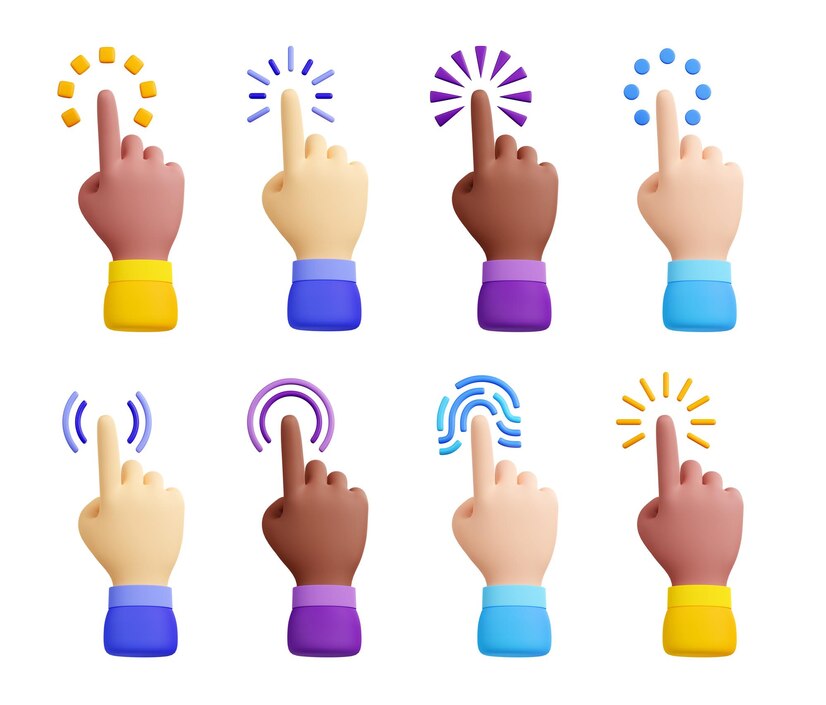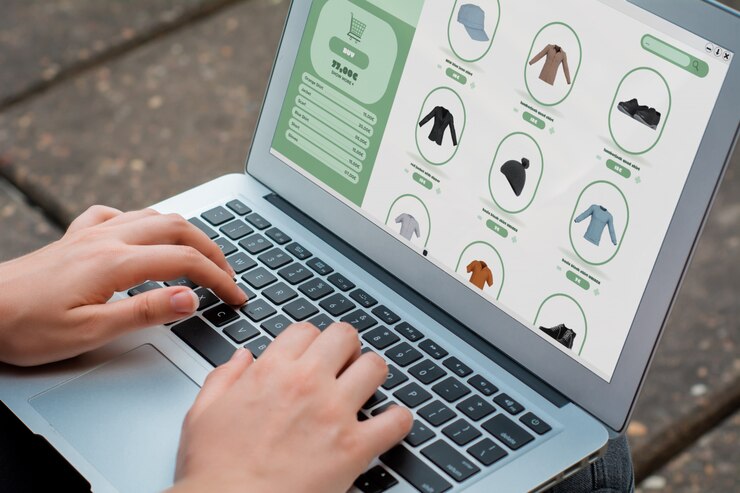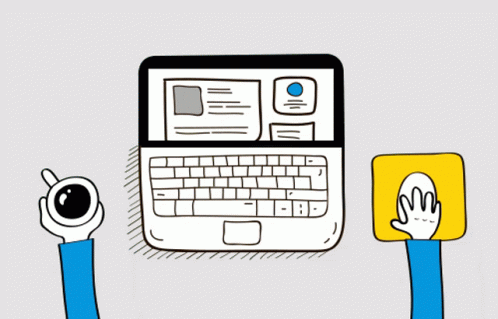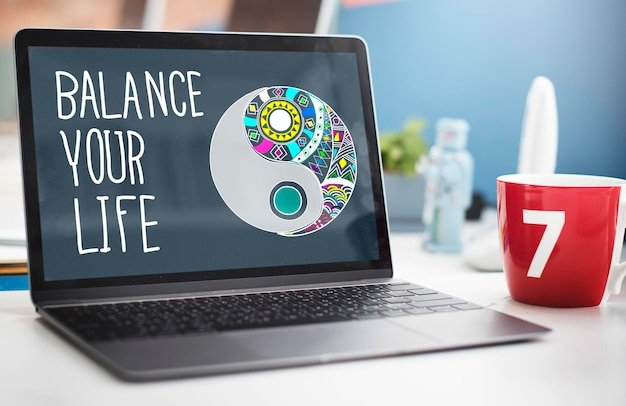How to create the perfect landing page: 8 rules and tips
-
Anna Voloshko
Copywriter Elbuz
“A discovery awaits you! The main secret of a successful landing page is revealed right here in this article. Believe it or not, when you learn these 8 rules for a perfect landing page, everything else will seem elementary! Continue reading to discover the secret to success and avoid common mistakes that many make."

Glossary
- Landing Page: Also known as a landing page, it is a web page specifically designed for a specific advertising or marketing campaign with the goal of attracting visitors and converting them into customers or leads.
- Unique Selling Proposition: Also known as a Unique Selling Proposition (USP), it is a special characteristic of a product, service or company that sets it apart from competitors and offers a unique advantage to consumers.
- Correct text: This is landing page content that clearly and attractively presents the product or service offering, attracts the visitor's attention and keeps them engaged.
- Call to Action: Also known as a Call to Action (CTA), this is a clear and direct request that encourages visitors to take a desired action, such as purchasing a product, filling out a form, or signing up for a newsletter.
- Trust: This is the factor that maintains visitors' trust in the landing page and the company, including the use of social proof such as customer reviews, guarantees or security certificates.
- Logical structure: A well-organized sequence of information and elements on the landing page, starting with an attractive headline and continuing with benefit points, product details and ending with a CTA.
- Hypothesis testing: An experimental approach to testing hypotheses regarding the effectiveness of various landing page elements to optimize its conversion and effectiveness.
- Pricing Policy: Information provided on the landing page about prices and rates for products or services, including free trial options or refunds if dissatisfied.
- Design: The aesthetic design of a landing page, including color scheme, fonts, layout, graphics, and overall user interface, aimed at creating an attractive appearance for visitors.
Rule 1: Creating a Unique Selling Proposition (USP)
How to make did your landing page stand out from your competitors? The answer is simple: create a unique selling proposition (USP). USP is what makes buyers choose your product or service. In this article, we will look at several stages of creating an outstanding USP and give you valuable tips.
Analysis of the portrait of the target audience
Before creating a USP, you need to carefully study the interests and needs of your target audience. Who are they? What are they looking for? What problems do they have? Analyze your audience and determine how your product or service can solve their problems and meet their needs.

Studying competitors
Another important step in creating a USP is studying competitors. Analyze the landing pages of your competitors, especially successful ones. Pay attention to what moves they used to hook the buyer. Learn from their mistakes so you don't repeat them. Reading reviews of similar products and services can also give you insight into what your audience likes and how you can hook them in your USP.
Formulation of the USP
When starting to formulate the USP, remember its main goal - to attract the attention of a potential buyer and show him that your product is the best choice. It is important that your words are brief, but succinct, logical and convincing. Focus on what exactly you offer the buyer and what benefits and benefits he will receive by working with you.
Using the USP formula
To make your USP as effective as possible, it is recommended to use a formula consisting of several key elements:
- Uniqueness – Emphasize the uniqueness of your product or service, which sets it apart from similar offerings on the market.
- Clarity – make your USP clear and simple for the target audience.
- Benefit – demonstrate to the buyer the benefits that he will receive by cooperating with you.
- Evidence - Provide evidence of the quality of your product or service, such as positive customer reviews or research results.
- Specificity – be specific in your USP, avoid common phrases and clichés.
Best practices for creating a USP
After creating a USP, it is recommended to run it through the evaluation table to make sure that it meets all the requirements:
| Helpful | Not useful |
|---|---|
| Uniqueness | Common phrases and cliché |
| Clarity | Vagueness |
| Benefit | Lots of technical terms |
| Evidence | Lack supporting facts |
| Specificity | Ambiguity |

Creating a unique selling proposition for your landing page is a key step to successfully attracting and retaining customers. Follow our advice, study the needs of your audience and analyze the actions of your competitors. Don't forget about the USP formula and apply best practices. Success will not keep you waiting!
"A unique selling proposition is what makes your product or service different from everything else on the market. Stand out and attract attention!"
Rule 2: How to create sales text for the perfect landing page
Congratulations! You already know that to create an ideal landing page you need to create a selling text. The second important rule of an ideal landing page is correctly designed and convincing text.
Why is text so important?
The text on your landing page is like a force of attraction that attracts your potential customers and convinces them to purchase your product or service.It is thanks to the text that visitors to the landing page will learn about the problem you solve and the solutions you offer. Your text must attract attention, be remembered and lead to action.

How to write a selling text?
Let's look at some tips and tricks for writing sales text for your landing page:
1. Determine your target audience
Before you start writing the text, you need determine your target audience. Who are they? What do they care about? How can you help them solve their problems? Understanding your audience will help you write more persuasive copy.
2. Focus on benefits and results
Your copy should answer the questions: “What do you offer?” and “How does your offer benefit the client?” Emphasize the benefits of your product or service and show how it will solve the customer's problem.
3. Use a Unique Value Proposition (UVP)
Your unique value proposition is what makes your offering different from your competitors. Use bright and memorable phrases to highlight the benefits of your offer. For example, "Buy a house on the river bank. Ecologically clean area, developed infrastructure, 2 kilometers from the Ring Road."
4. Write simply and clearly
Your text should be easy to understand. Use simple and understandable language, avoid complex technical terms. You must speak the same language as your audience.
5. Use Emotions and Stories
People remember and respond better to stories. Tell a story about how your proposal helped someone solve a problem. Use emotional images and words to make your audience want to take action.

6. Create powerful headings and subheadings
Headings and subheadings are the fire that attracts attention. Use them to highlight the main points of your proposal and interest the reader. For example, “Do you want to buy a house on the river bank at a profit? We have an offer you can’t refuse!”
7. Add a block of images
Visuals are a powerful way to grab attention. Add high-quality images to your landing page that illustrate your product or service.
Summary of the second rule:
Your text must be selling and reliable in order to capture the attention and convince visitors to your landing page. Remember to use your USP, tell a story, create strong headlines and highlight the benefits of your offer. Remember that text is a tool that helps you sell.

| What to do | What not to do |
|---|---|
| Write a selling text with a USP and bright headlines | Don't use complex technical terms |
| Post quality images | Don't focus only on the features of your product |
| Use emotions and stories | Keep clarity for your audience |
Don't put off writing your sales text until later - start attracting clients and selling today!
"The ability to attract attention with text and keep it is one of the main qualities of a successful landing page." - Hao Feng, Marketing Expert at AliExpress.
The target audience of your article can learn more about the USP in the article " How to write a USP : advantages of the method, templates, examples ".
Rule 3: Create attractive call-to-action buttons
An important part of a successful landing page is attractive and effective buttons with call to action (the same “buy button” or “request a call”) that help attract the attention of visitors and turn them into active customers. In this part of the article, we will look at the basic rules for creating such buttons, and also share useful tips for using them to avoid mistakes that are often made when creating a landing page.
1. Button placement
Call-to-action buttons should be located in several places on the landing page. The first thing to consider is the placement of buttons in the text. They can be embedded in the content or highlighted with special elements to attract the reader's attention. For example, a “request a call” button could be placed next to a description of the benefits of a product or service.
The second place to place buttons is in conversion blocks or call-to-action blocks. They can be highlighted in a bright color and placed prominently on the page so that the visitor can immediately notice them. Buttons in conversion blocks should be simple and understandable, with a clearly formulated call that makes the visitor want to take action.
And finally, call-to-action buttons should be located at the very end of the text. These can be offered in the form of a final offer or in the form of contact information so that the visitor can contact you immediately. This way, you give the visitor the opportunity to take a targeted action right now, without distracting him from other pages or sites.

2. Wording of calls
Wording of calls on buttons should be clear, compelling and relevant to your proposal. Use active verbs that encourage the visitor to take action. For example, instead of “learn more,” it is better to use “get detailed information” or “download a free guide.”
Remember that button calls should be tailored to your audience and the context of the construction landing page. Use keywords that customers typically search for to ensure your button is as relevant as possible. For example, instead of “submit a request,” you can use “order a free presentation” or “get a cost estimate.”
3. Alternative Appeals
In case selling your product or service requires more trust or a long transaction cycle, you can use alternative appeals on the buttons. For example, instead of a direct call to “buy a house” or “order a turnkey cottage,” you can offer the visitor an additional service that does not oblige him to immediately make a purchase.
For example, on the buttons you can indicate “get a cottage project for free” or “order a presentation of a residential complex” so that the visitor can get more detailed information before making a purchase. This way, you spend more time warming up the client and increasing the likelihood of a successful transaction.

4. Changing buttons depending on the stage of the transaction
It is important to understand that buttons with Calls to action may vary depending on the stage of the transaction or visitor behavior on the site. For example, at the first stage you can offer a button for receiving a free consultation or downloading a catalog, and at subsequent stages - a button for placing an order.
Monitor the behavior and actions of visitors on your site, analyze the data and make adjustments to the design and content of call-to-action buttons. This will help improve conversion and increase the effectiveness of your landing page.
Examples and illustrations
To illustrate the rules for creating call-to-action buttons, let's look at examples from real practice.
Example 1: “Order a free presentation” button
Consider a landing page that offers house construction services. In this case, to get more potential clients, you can place a button calling “Order a free presentation.” This button allows visitors to get detailed information about the house project and evaluate its advantages before making a purchase.
Example 2: Button “Get a cottage project for free”
Let's say your landing page is focused on selling cottages. Instead of a direct call to buy a cottage, you can offer visitors a button with the call “Get a cottage project for free.” This way, you enable the client to evaluate the project and its relevance to their needs, which helps establish trust and move the client into the deal.

Best Practices and Summary
To create attractive and effective call-to-action buttons on your building landing page:
- Place buttons in different parts of the page, in the text, in conversion blocks and at the end of the text.
- Use clear, killer appeals tailored to your audience and page context.
- At the very beginning of the deal, offer alternative appeals to warm up the client.
- Monitor visitor behavior and make changes to buttons depending on the stage of the transaction.
Based on these rules and examples, you can create attractive call-to-action buttons on your landing page that will help increase conversions and attract more customers. And remember that each case is unique, so experiment and analyze the results to optimize your page even more effectively.
"Well-designed landing page buttons are a key success factor in attracting customers and increasing conversions." - Melvin Reed, Internet Marketing Expert at 6pm.
| Do | Don't |
|---|---|
| Place buttons in different parts of the page | Overload the page with a large number of buttons |
| Use killer and relevant calls | Formulate calls with uninformative phrases |
| Offer alternative calls at the initial stage | Use the same calls at all stages of the transaction |
| Monitor visitor behavior and analyze data | Do not make changes to buttons without relying on data |
Now that you understand how to create attractive buttons on your landing page, you're ready to move on to the next section of the article. Remember to put these tips into practice and experiment with buttons to find the most effective solution for your business. Let your landing page become perfect and bring you more targeted actions and sales!
Rule 4: Portrait of the target audience: the main elements of a successful strategy
Portrait of the target audience - what is it and why is he needed? In this part of the article, we will look at the key aspects of creating a portrait of the target audience for an ideal landing page. Let's find out what components need to be taken into account and how to correctly apply this tool to improve the efficiency of your project.
In order to create the perfect landing page, you need to know exactly who your target audience is. A target audience portrait is a detailed description of your potential customers, which will allow you to better understand their needs, preferences and habits. And knowing your audience is one of the key factors for the success of any business.

Why is it important to identify your target audience?
You will never be able to create an attractive and effective landing page if you don’t know who exactly it is intended for. A portrait of your target audience helps you determine exactly what characteristics and features of your product or service will be most interesting to your customers.
For example, if your landing page offers home appliances, you should understand that your potential customers may be interested in low energy consumption, stylish design and reliability of the product. These factors will be in the first place for your target audience.
How to create a portrait of your target audience?
Do Your Research
The first step to creating a target audience profile is to do research to learn as much as you can about your potential customers. Study their preferences, habits, motivations, interests and problems. Based on this data, you can determine which components and features of your product or service may be most attractive to your target audience.
Identify your main customer groups
Based on your research, you will be able to divide your target audience into main customer groups. Each group will have its own characteristics and requirements that you must take into account when creating a landing page.
For example, if you sell home appliances, you may have a group of customers who value the latest technology and functionality, and a group of customers who value affordability and ease of use. For each group, you can tailor the content and landing page design to best suit their requirements.
Use Social Proof
One of the most effective ways to build trust in your company and product on your landing page is through social proof. Post customer reviews, certifications, and awards that demonstrate your expertise and reliability. This will help convince visitors of the quality of your product or service and make them more likely to make a purchasing decision.
In addition, posting case studies of successful projects can also be useful. Share photos, descriptions and the story of your successful project. Show how you overcame challenges and achieved success. This will allow your target audience to see you as professionals who can handle any task.
Provide information about your company
It is important to provide documentation about your company to your landing page visitors. Place licenses, certificates, certificates and other papers that confirm your legal and official activities. This will make it possible to convey to visitors that you work officially, observing all legal norms.

Rules for creating a portrait of the target audience in an ideal landing page
| Things to do | Things to avoid | |
|---|---|---|
| Conduct research | - Study the preferences, habits and needs of the audience; | - Don't neglect research |
| - Analyze your competitors and market situation ; | - Don't make assumptions about your audience | |
| Use evidence | - Post customer reviews and awards; | - Do not use reviews and awards from third parties |
| - Share cases of successful projects; | ||
| Post information | - Document your company with legal and official documents ; | - Do not post text that is not supported by facts |
Results
Designing a portrait of the target audience is an important step in creating the ideal landing page. Every element of your landing page, from design to content, should be aimed at the specific needs and preferences of your target audience. By completing this task, you will be able to attract more reliable customers and increase the conversion of your landing page.
Consider these tips when creating your ideal landing page and you will see your business performance increase significantly.
Advantages of creating a portrait of the target audience:
- Clarifying the needs and preferences of clients.
- Increasing the credibility and attractiveness of your landing page.
- Directed and effective communication with the target audience.
- Improving the conversion and effectiveness of your project.
Create a portrait of your target audience and discover new horizons for a successful business!
Want to learn more about target audience persona and its role in online marketing? Read our article “What is a portrait of the target audience and why is it needed in an online store” here.
🚀 Rule 5: Landing Page Structure
📐 The Importance of Order
More One common mistake when creating landing pages is a chaotic arrangement of blocks. Each landing page is unique, but when composing its structure, it is necessary to adhere to the general outline. For most successful sales pages, it is universal.
🏢 Give an introduction to the company
The first block of the landing page must be information about your company. The visitor must understand where he is and who he is dealing with. Let's imagine that the company "Promsnabstroykomplekt" has attracted our attention. Unfortunately, the phrase “Promsnabstroykomplekt production company” does not say anything about its activities and distinctive features. However, if we come across the phrase “Manufacturing company Promsnabstroykomplekt - we have been building turnkey country houses for 20 years,” we will immediately imagine what kind of organization we are talking about. Remember that this information should be brief but concise in order to convey the main thing about your company.

💡 Offer or USP
The second block on the page is a description of your product or service. Here you should talk about its features and benefits. Be concise and informative to pique the interest of your potential client. Tell us about the benefits and specific features of your product or service. Clearly define your target audience and competitive advantages.
🌟 Evidence and call to action
The next block on your landing page should contain evidence of the quality of your work or product provided. This could be customer reviews, partnership agreements, awards, certificates or other achievements that confirm your competence.
Don't forget the call to action. In this block, you need to convince the visitor to accept your offer and take an action that will lead him to the goal - purchase, subscription, registration, etc.
❌ What should you avoid?
- Do not create a chaotic page structure. Follow the established order and importance of blocks.
- Do not use general or uninformative phrases when describing your company. Give your visitor a complete understanding of your organization.
- Don't neglect to describe in detail the features and benefits of your product or service. This will help the potential client better understand its value.
- Don't forget to back up your words with evidence. Show the client that you are reliable and competent.
- Don't forget about calls to action. Encourage the client to make a decision and take the required action.
📊 Review
| What to do | What to avoid |
|---|---|
| Build a logical page structure | Create a chaotic page structure |
| Give an idea about the company and its activities | Use uninformative phrases in the description of the company |
| Go into detail when describing a product or service | Skip important features and benefits |
| Support your words with evidence | Leaving the client without proof of quality |
| Implement calls to action | No calls to action |
Example building the logical structure of a landing page:
- Block 1: Information about the company
- Block 2: Description of the product or service
- Unit 3: Evidence of Quality
- Unit 4: Call to Action
Applying the rules of structure landing page, you will create a page that will interest visitors, convey basic information about your company and product, and also allow you to successfully attract customers and succeed in your business.
🔗 Leave a review of our work and help us become better!
"The structure of a landing page is one of the main procrustes stones for successfully selling a product or service. Uncertainty and chaos on the page literally scare off a potential client. Be confident in every step you take and don’t forget about correct structure." - Laura Chapman, Amazon landing page design expert.
Rule 6: Variation testing (A/B- testing)
A/B testing is one of the key tools in creating the perfect landing page. This method allows you to experiment with different variations of a page to see which ones produce the best results.

Why use A/B testing?
Improving the conversion rate
The main metric of landing page success is the conversion rate - that is, the number of visitors who completed the target action (purchase, subscription, etc.). ). A/B testing allows you to find out which page elements (for example, module placement or design options) have the greatest impact on this indicator.
Avoiding common mistakes
In a landing page, even the smallest detail can be critical to its success. For example, we placed the modules in a list - conversion is one, in a grid - another. To accurately determine the best option, A/B testing is carried out, where two trial versions of the landing page are created and launched.
Finding the best solutions
A/B testing helps developers and marketers explore which changes to a page's structure, design, or content produce the best results. Thanks to this, you can make informed decisions based on data and experience.
Use A/B testing to improve your landing page
Set a specific hypothesis: determine what change on the page you want to test and what metric will be an indicator of success.
Create variations for testing: develop two or more variations of the page with different changes.
Run a test: Divide your audience into groups and let them see different versions of the page.
Collect data: Track the metrics you defined in your hypothesis to understand which option performs best.
Analyze the results: Use statistical methods to evaluate the significance of the data obtained and make decisions based on the test results.
Implement the winning version: after testing is completed, launch the version of the page that demonstrated the best conversion rates.
A/B Testing Best Practices
Test One Factor at a time: to get accurate results, vary only one part per page per test.
Pay attention to statistical significance: do not make decisions based on minor changes in data. Make sure your test results are statistically significant.
Be prepared for change: Successful A/B testing can result in unexpected page changes. Be prepared to adapt and change your strategy based on your findings.
Using A/B testing in landing page creation is an indispensable tool that will help you improve your conversion rate and lead more visitors to perform targeted actions. Apply this methodology and explore which changes lead to the best results for your business. 
But don't forget that every landing page is a unique project, and what works for one may not work for someone else. Therefore, A/B testing is an indispensable tool for optimizing your landing page and achieving the best results.
Now that you know the benefits of A/B testing, let's look at another important aspect of creating the perfect landing page - website design, which plays a crucial role in attracting the attention of visitors. In the next part of our article, we will look at the rules of landing page design and share useful tips for creating it.
Review: A/B Testing
Benefits of Using A/B Testing for Your Landing Page:
| What's useful | What to avoid |
|---|---|
| Improving conversion rates | Mistakes in A/B testing |
| Avoiding common mistakes when creating a landing page | Unjustified passion for A/B testing |
| Determining optimal options for module placement | Incorrect interpretation of test results |
| Development of trial options for experiments | Minor changes that have no impact impact on conversion |

Rule 7: Correctly indicate items and prices
One of the important aspects of creating the perfect landing page is to correctly indicate items and prices on the landing page. Mistakes in this matter can lead to the loss of a potential client or even their distrust of your offer. In this section, we'll look at how to correctly identify and present popular items and prices on your landing page.
Why is it important to indicate items and prices?
A visitor who lands on your landing page expects to see specific offers and their prices right on the spot. He wants to understand if your offer fits his budget and if he needs to look further into your company or product. If there are no prices or they are not clearly stated, this can create mistrust and turn off a potential client. It’s better to lose a customer who isn’t ready to buy than to waste time processing a low-converting lead.

How do I specify items and prices?
1. Select popular items
2. Divide prices into tariffs
3. Specify prices and visible changes
Important points to consider when listing items and prices on your landing page:
- Determine the most popular products or services and list them first.
- Use tariff divisions for customer convenience.
- Be sure to indicate available prices and possible changes to avoid mistrust from customers.
- Pay attention to the use of pop-ups on the landing page, they can be useful, but you need to use them carefully and test their effectiveness.
- Communicating with experts, we came to the conclusion that the recommendations we provided are the best practices for indicating items and prices on a landing page.
Using these rules, you will avoid common landing page mistakes and increase your chances of successfully attracting customers.

Well-defined items and clearly stated prices are the key to the success of your landing page. By following these simple rules, you'll create a page that clearly offers customers what they want and ultimately increases conversions.
Don't forget to read the article "Trained employees are the key to your company's success", where we look at effective methods of training staff to achieve better business results.
"Properly listing line items and pricing on your landing page is an important part of creating the perfect landing page. Be sure to consider your target audience and use the guidelines in this section to create a successful landing page "
📝 Rule 8: Creating Good Design
Linear structure: create a picture instead of a mosaic of blocks
One of the most important aspects of a successful landing page is its structure. The visitor should instantly understand the meaning of your offer and act in accordance with your goals. When creating the perfect landing page, you should stick to a linear structure to avoid confusion and create the simplest possible interface.

In order for your website to attract attention and motivate visitors to action, you need to avoid complex blocks and inscriptions. It is optimal to use infographics, bulletins and other images to create the impression of a picture that immediately conveys the main information. Use the concept of “less is more” and try to minimize the number of blocks and text on the page.
Attractive Design: Capture Eyeballs with Your Layout
Good design is key to creating the perfect landing page. The design should be as attractive and easy to read as possible. The basic rules of good design are:
- Optimal font: Use a large font size to make text easier to read.
- Contrasting background: Choose a background that differs from the font so that the text is clearly visible.
- Linear structure: Provide information sequentially so that the visitor does not waste time scrolling up and remembering previous blocks.
- Title and CTA button: Each block should contain a title and a clear, compelling call to action button.
- Buttons in eye-catching colors: Use red or other bright colors for your buttons to make them immediately eye-catching.
- Notice of consent to the processing of personal data: below each conversion button, place a notice of consent to the processing of personal data. Please check the box in advance to indicate your agreement with the privacy policy.

Persuasive and Emotional Impact: Capture Attention
In addition to good design and linear structure, it is important to pay attention to the persuasiveness of your landing page. Use the following techniques to grab and hold your visitors' attention:
- Facts and Figures: Provide statistics to back up claims and drive home the point audience the significance of your offer.
- Stories and Examples: Tell real-life success stories of your customers or share specific examples of the benefits of your product or service.
- Humor: Use humor in your landing page to break up the seriousness and create a positive mood among visitors.
Avoid common mistakes: what not to do on your landing page
It’s important to know what mistakes should be avoided when creating the perfect landing page. Here's an overview of what you should and shouldn't do on your landing page:
| Dos | Don'ts |
|---|---|
| ☑ Use a linear structure | ❌ Overload the page with unnecessary blocks and inscriptions |
| ☑ Create a readable and attractive design | ❌ Use small font and bad visible background |
| ☑ Attract attention with facts and figures | ❌ Do not support your statements with reliable data |
| ☑ Use success stories and examples | ❌ Do not provide specific examples of product benefits |
| ☑ Use humor to enhance the emotional impact | ❌ Be too serious and lack emotional content |
Have questions or need help?
If you have questions about creating the perfect landing page or need help, we recommend that you refer to the article "Relieving Objections: 17 Effective Ways to Handle Customer Objections". This article will help you deal with possible doubts among your clients and teach you effective methods of dealing with objections.
Expert Tip:
"Creating the perfect landing page is an art that combines design aesthetics, compelling copy and clear structure. Linear structure and simplicity are some of the key elements that will help grab attention and inspire action. Remember to use creative elements and humor to leave a strong impression on visitors."
— Jared Morgan, eBay Marketing Expert.
Now you know the basic rules for creating the perfect landing page and have received useful tips on avoiding common mistakes. Using a linear structure, design guidelines, and emotional impact, you can create landing pages that grab attention and motivate visitors to action.
Best practices for creating the perfect landing page
Remember
The perfect landing page must match certain rules and attract the attention of visitors. In this section, we'll look at some key aspects that will help you create the perfect landing page and avoid common mistakes.

Unique Selling Proposition (USP)
The first rule of an ideal landing page is developing a unique selling proposition (USP). Your USP should attract attention, highlight the benefits of your product and interest users. Describe why your product is better than your competitors and how it can positively impact the lives of your customers.
Selling texts with a call to action
Selling texts are an important part of the landing page. They should convincingly describe the benefits and value of your product and include calls to action. Create compelling headlines and detailed product descriptions so that users immediately understand what you offer and how it can help them.
Increasing trust and eliminating objections
In order for users to trust your landing page and product, you need to use techniques to increase trust. Include customer testimonials, quality guarantees, results demonstrations, and other elements that can help address objections and validate the reliability of your product.
Logical and simple structure
Don't forget about the logical and simple structure of your landing page. Divide the information into easy-to-understand chunks, using numbered lists and headings to make it easier to understand. Make sure users can easily find the information they need and contact you if they are interested in your product.
Hypothesis Testing with Metric Tracking
To create the perfect landing page, you must do hypothesis testing with tracking metrics. This will allow you to determine which elements of your landing page work best and which ones need improvement. Track conversions, time on page, bounces, and other metrics to gradually optimize your landing page and improve its performance.
Tell us about the pricing policy
Pricing policy is one of the key factors that influence users' decision to purchase a product. Tell us about the prices for your offer, provide information about possible discounts or promotions. Make prices clear and attractive to users.

Create a cool design
The visual aspect of your landing page is equally important. Create a cool design with attractive colors, clear fonts and high-quality images. Pay attention to visual structure, balance of elements, and usability.
Obtain consent to the processing of personal data
And last but not least, obtain consent to the processing of personal data. Include a form on your landing page in which users can leave their contact information and agree to their use to communicate with you. Remember that compliance with confidentiality standards is the key to customer trust.
Review: What's Worth and What's Not to Do
To help you make the right decisions when creating the perfect landing page, here's an overview of what's worth and what's not worth doing:
| Things to do | Things not to do |
|---|---|
| Develop a strong USP | Ignore the uniqueness of the offer |
| Write selling texts | Use banal and unconvincing phrases |
| Increase user trust | Leave visitors' objections unanswered |
| Create a logical and simple structure | Confuse visitors with confusion of information |
| Test and expand your landing page | Mindlessly collect metrics |
| Provide pricing information | Confuse users with pricing |
| Create an attractive design | Use clashing colors |
| Include a privacy consent form | Do not provide an opportunity to consent |
We hope that based on these rules and guidelines, you will be able to create the perfect landing page that will attract the maximum number of customers to you. Good luck in business!
Expert commentary
"Creating the perfect landing page requires taking into account all important aspects, from selling text to quality design At the same time, do not forget about consent to the processing of personal data, this is an important aspect for maintaining customer trust" - Elena Vasilyeva, marketing expert at Epicenter.
"Developing a landing page that sells is not an easy task, but if you follow all the above rules and recommendations, you will be able to attract users and succeed in your business" - Olga Gritsenko, experienced web developer at Prom.
When creating the perfect landing page, you need to take into account all the above-mentioned rules and recommendations. An excellent landing page should have a bright and memorable USP, attractive selling texts, elements to increase trust, a logical structure and a simple design. Also, do not forget about the pricing policy and be sure to obtain consent to the processing of personal data. By following these guidelines and rules, you will be able to create the perfect landing page that will attract potential customers and give you leads.
For further details and sources, we recommend that you read the article get a lead.
Learning about successful lead generation and creating effective landing pages will help you achieve greater success in your business.
Frequently asked questions on the topic 8 rules for an ideal landing page: tips and tricks for avoiding common mistakes
1. What is the importance of a unique selling proposition on a landing page?
A unique selling proposition helps you grab the attention of visitors and offers them a specific advantage or benefit from using your product or service.
2. What text should be on the landing page?
The text on the landing page should be selling, informative and easy to read. It should describe in detail the benefits of the product or service, the problems it solves, and provide specific examples of successes.
3. How to create a call to action on a landing page?
The call to action should be clear, specific and compelling. Use active verbs, create a sense of urgency, and offer a reward or bonus for action.
4. How to inspire trust on a landing page?
To build trust on your landing page, use social proof, customer reviews, quality assurance, certificates, and detailed information about the company and its achievements.
5. How to create a logical landing page structure?
Use clear headings, subheadings and sections to create a logical landing page structure. Convey information sequentially, from general to specific, and maintain logical connections between sections.
6. Why is it important to test hypotheses on a landing page?
Hypothesis testing allows you to determine which landing page elements are most effective in attracting and retaining visitors. This helps optimize your landing page and increase conversions.
7. How to talk about the pricing policy on the landing page?
Be specific and transparent about your landing page pricing policy. Indicate the cost of the product or service, special offers, promotion periods and possible payment options.
8. How important is good landing page design?
Good landing page design plays a key role in attracting attention and retaining visitors. It should be aesthetically pleasing, functional and consistent with your brand.
9. Do I need to remember all the rules?
It is not necessary to remember all the rules, but following them is recommended to achieve the best results and create the perfect landing page.
10. What if you need help creating the perfect landing page?
If you need help creating the perfect landing page, turn to a marketing and web development professional. They will be able to offer you expert solutions and caring support.

Thanks for becoming a more advanced reader! 👏
With this portion of knowledge about creating the perfect landing page, you are now capable of miracles in the world of digital marketing! 🚀 With these valuable tips and tricks, you definitely deserve to be called a professional in this field.
So now go online, spread your wings, and show everyone how to create an excellent landing page, avoiding all the common pitfalls along the way! 🌟
Just remember one thing: even to a dish prepared according to the perfect recipe, every cook adds his own twist. So don't be afraid to experiment, be creative and go beyond expectations!
Good luck, master of creating perfect landing pages! 💪💡
.gif)
- Glossary
- Rule 1: Creating a Unique Selling Proposition (USP)
- Rule 2: How to create sales text for the perfect landing page
- Rule 3: Create attractive call-to-action buttons
- Rule 4: Portrait of the target audience: the main elements of a successful strategy
- Rule 5: Landing Page Structure
- Rule 6: Variation testing (A/B- testing)
- Rule 7: Correctly indicate items and prices
- Rule 8: Creating Good Design
- Best practices for creating the perfect landing page
- Frequently asked questions on the topic 8 rules for an ideal landing page: tips and tricks for avoiding common mistakes
- Thanks for becoming a more advanced reader!
Article Target
educate and inspire readers to create better landing pages
Target audience
marketers, web developers, business owners
Hashtags
Save a link to this article
Anna Voloshko
Copywriter ElbuzI turn the chaos of online trading into the choreography of efficiency. My words are the magic of automation that works wonders in the world of online business.
Discussion of the topic – How to create the perfect landing page: 8 rules and tips
In this article, you will learn the basic rules for creating the perfect landing page, as well as get useful tips on avoiding common mistakes.
Latest comments
9 comments
Write a comment
Your email address will not be published. Required fields are checked *
















.png)













John
Very interesting article! I'm just starting to learn how to create landing pages and would like more information on common mistakes to avoid.
Emma
Hello John! I am an experienced marketer with experience working with landing pages. I can share a few mistakes that I observed. For example, one of them is a bad headline that does not attract the attention of potential customers.
David
Hello Emma! I also do marketing and am faced with the problem of information overload on the landing page. Too much text can turn off visitors. It is better to use shorter and more concise sentences.
Sophie
Hello David! I'm more inclined towards the visual side of web design, so I love well-designed landing page images. Recently I encountered an error when the image was of low quality and ruined the impression.
Luca
Hello Sophie! I completely agree. High-quality images can do wonders for a landing page. However, I also noticed that users are often unhappy when there is no information about the company or brand on the landing page. This is also one of the errors that you should pay attention to.
Marta
Hello, Luka! I agree, information about the company is important. Additionally, I would add that the lack of a clear call to action can also dramatically reduce the effectiveness of the landing page. Users should understand what to do after reading the information.
Max
Hello Martha! I would like to share my experience. I often see that landing pages are not optimized for mobile devices, and this is a big mistake. You should always make sure that your landing page looks great on different screens.
Olga
Hi, Max! I completely agree with you. Another common error is long page loading times. This may discourage visitors. It is best to use lightweight images and minimize the number of scripts to speed up loading.
Grumpy
All these 'perfect' landing pages are bullshit. Do you really think that all these rules apply to every business? Nonsense!